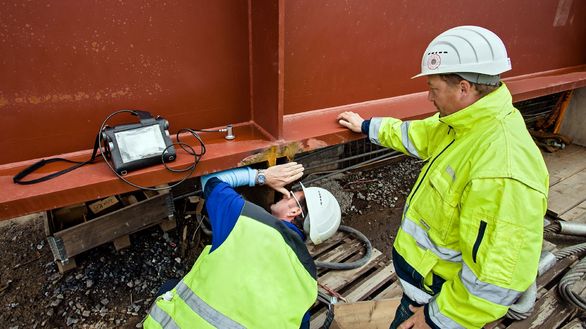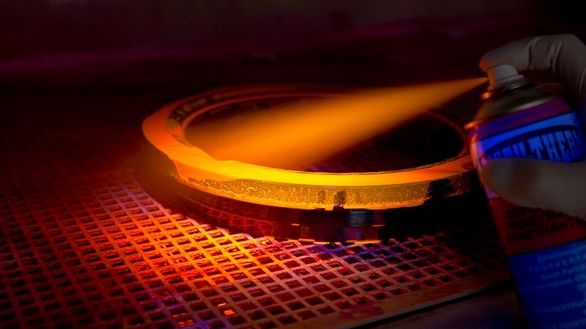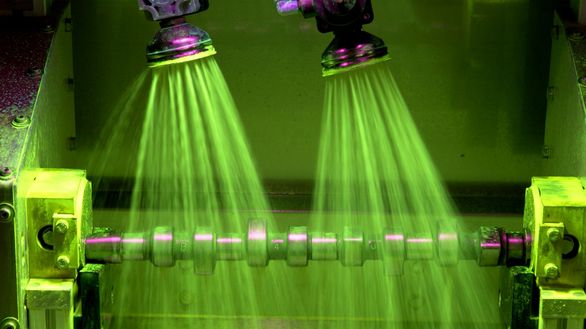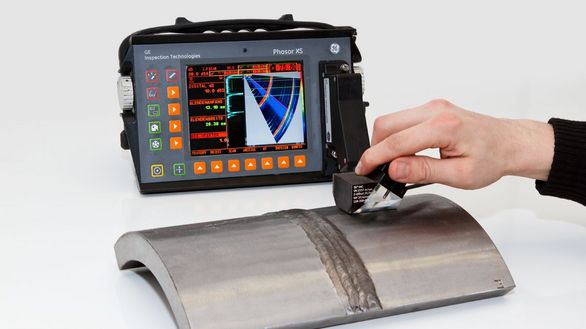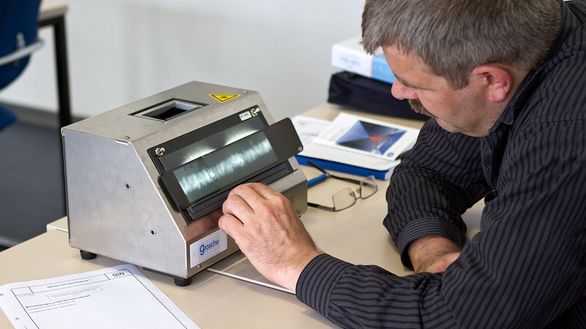Overview Non-destructive materials testing courses
Non-destructive materials testing according to DIN EN ISO 9712
The non-destructive material testing provides important information about the quality of components and constructions. The serviceability of the tested components is not affected by non-destructive material tests.
The Visual Testing (VT) belongs to the most important non-destructive testing procedures and is e.g. required by the standards according to DIN EN ISO 1090 for welded joints.
Surface testing methods such as the Penetrant Testing (PT) often called dye penetrant test or red-white-test and Magnetic Particle Testing (MT), colloquially called flux, are established testing procedures in a lot of industry sectors. They are used in plant engineering, mechanical engineering, steel construction, power plant construction or the automotive industry.
Ultrasonic Testing (UT) and Radiographic Testing (RT) colloquially called x-ray-tests provide infromation about the component volume, so that inner defects such as cracks, slags, pores or lacks of fusion can be found.
Professional development
In the field of non-destructive material testing it is possible to attend qualification courses and afterwards apply for a certification according to DIN EN ISO 9712. The TÜV Nord, our cooperation partner with the certification of personnel, issues a DAkkS-accredited certificate, after checking of the necessary documents. The certificates have a broad validity range for the product sectors "castings", "forgings", "welding seams", "tubes and pipes" and "rolled products". For customers that are only occupied with welding seams, courses for visual testing of welding seams (VT1/2 w) and evaluation courses for radiography images of welding seams (RT2.FI) are offered. The qualification includes teaching contents to pressure retaining components, so that a certification accoriding to the pressure equipment directive is possible.
The certificates are internationally accepted, because the training is based on international regulations and is linked with the world wide organization of the TÜV.
The personal certificate increases the personal market value. Numerous job offers demands a certificate according to DIN EN ISO 9712 in the job description.
Training levels in the non-destructive materials testing
DIN EN ISO 9712 describes 3 qualification levels with different fields of activities. After authorization by the employer the:
- personnel of level 1 is allowed to perform the test procedure and to document the test results
- personnel of level 2 can apply the activities of level 1 and evaluate the test results according to standards and regulations.
- personnel of level 3 can apply the activities of level 2, select the test procedure and make procedure descriptions as a base for the level 2 personnel to work on. The level 3 personnel can take full responsibility for a test facility.
Level 3 training
Level 3 is the highest level in the field of non-destructive material testing. Requirement for a level 3 certification is the basic course. It contains the classical test procedures VT, MT, PT, RT and UT as well as a total repetition to the topic complex material testing. The certification of personnel according to DIN EN ISO 9712 is also a topic of the basic course. With the exam in the basic course the candidate shows that he/she has an overview over the common test procedures and that he/she is capable of choosing the right testing procedure in the future.
In the exam of the basic course four of the above-mentioned test procedures will be examined. The course enables the certification of all offered test procedures by the personnel certification site of the TÜV - independent of the topics the candidate choose in the exam.
An additional requirement for the certification on level 3 is the practical exam of level 2 in the aspired procedure and the proof of the needed course hours, which result from the hours from level 1, level 2 and level 3. The needed amount of course hours can be reduced with a recognized previous education for example as an technician or an engineer.
Another requirement for the certification is the industrial experience time, which can also be reduced dependent on the previous education. Often the path to level 3 over (possibly reduced) level 2 courses is reasonable. Already existing certificates can often be fully recognized.
Take advice to find your ideal way to level 3.
Independent testing
The certification of level 2 enables the autorization of the holder of the certificate to an independent testing and evaluation according to regulations. Tests can be made by in-house employees and so the costs for the relevant service can be dropped.
The welding quality tester
Next to the further education according to DIN EN ISO 9712 the course for the welding quality testing personnel according to IIW guideline offers international welding engineers and international welding specialists the opportunity to get familiar with the topic complex of non-destrucive material testing in a short time frame. The link between the welding technology education and the testing technology knowlegde enables the welding quality testing personnel to define the testing activities precisely and deduce the conclusions that are important for the quality of a welded joint.





